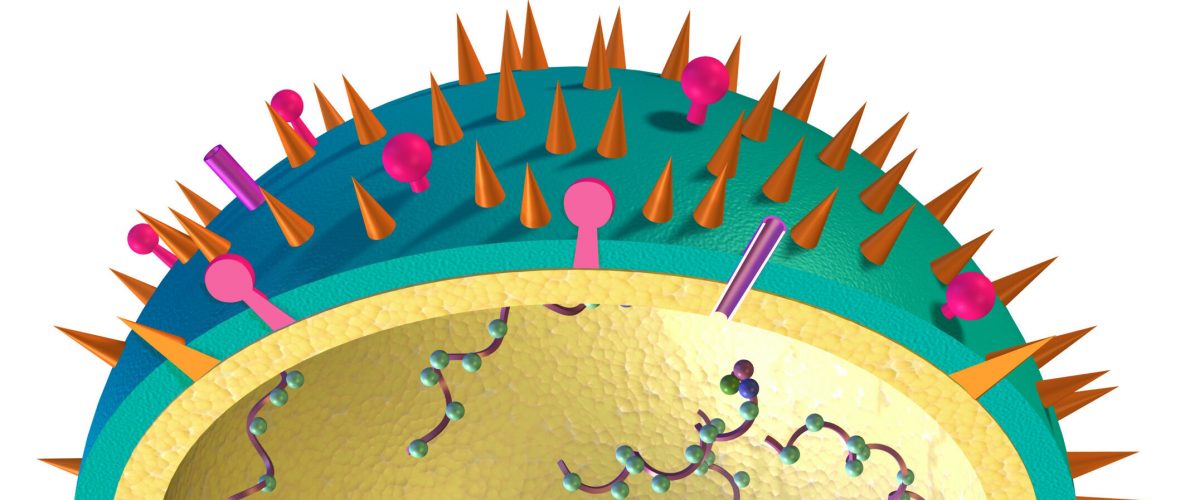
Image credit: Influenza virus, National Institute of Allergy and Infectious Diseases, National Institutes of Health
Ragon and MIT researchers develop computational model to understand drivers of immunodominance; create vaccine strategy in mice that focuses antibody response to universal flu vaccine target.
When the body responds to an infection like the flu virus, it makes different antibodies to recognize different pieces, or antigens, of the virus. But many times, one or several antibodies are made in much larger quantities that the rest. These antibodies known as the immunodominant response.
In the flu, this immunodominant response is usually to antigens that rapidly mutate. Once the antigen mutates, the antibodies formed can no longer recognize it, and the immune system cannot protect against re-infection. This is why each flu season requires a different flu vaccine to train the immune system against each year’s new strains. However, a small number of antibodies, called broadly neutralizing antibodies, are developed to recognize antigens that rarely mutate and look the same in different flu strains, which could provide long-lasting protection against the rapidly mutating flu virus.
Ragon Group Leader Daniel Lingwood, PhD, and MIT Professor and Ragon Associate Member Arup Chakraborty, PhD, recently published a study in Cell Systems in which they created a model that allowed them to identify ways in which they could re-focus the common immunodominant response to a more favorable response, which would allow for long-term immunological memory of the flu.
“If we can engineer a response where these broadly neutralizing antibodies were the immunodominant response, instead of being rare subsets of the response,” says Lingwood, “then we could create a flu vaccine that would provide protection for years, instead of needing a new one each flu season.”
Towards this, Arup and Daniel’s groups created a computational model that mapped out immunodominant responses as they formed, allowing them to identify key features that drove the response, such as the geometry of the viral proteins and pre-existing antibodies. They used this information to test out flu vaccine strategies in a mouse with a humanized immune system and found that, with the right conditions, they could drive the immunodominant response away from antibodies against rapidly mutating antigens and towards broadly neutralizing antigens.
This finding could help researchers develop a long-lasting influenza vaccine by allowing them to develop a vaccine that promotes an immunodominant response with broadly neuatralizing antibodies.
The model isn’t limited to influenza, however.
“Even though we developed this model with influenza,” says Lingwood, “we can use it to look at any other pathogen where the immunodominant response is against the ‘wrong’ antigens, and works towards a vaccine strategy to create the immunodominant response that provides the best protection.”